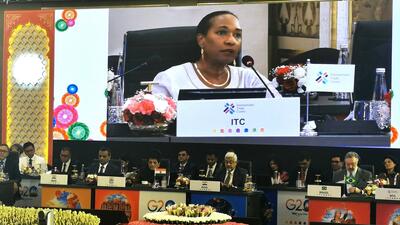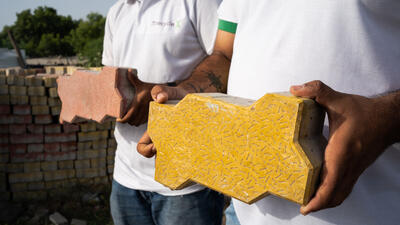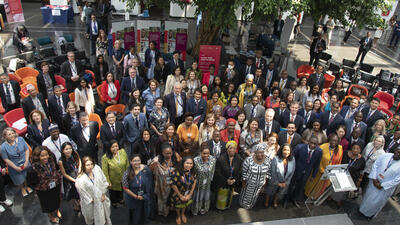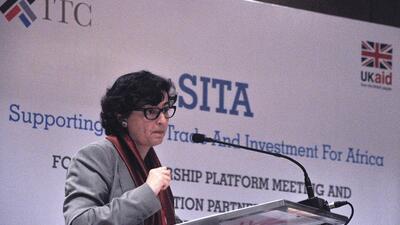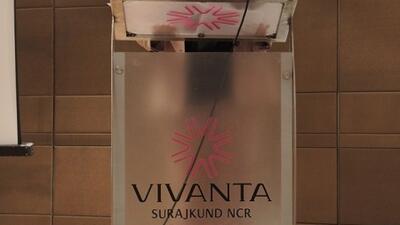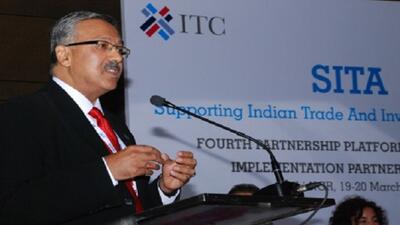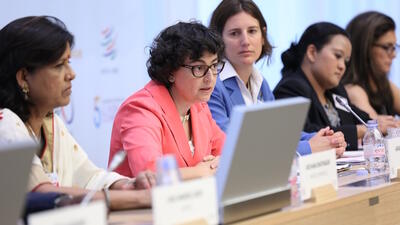
SITA: setting an example of South-South cooperation (en)
Building on one year of designing the project through extensive consultation meetings and field visits, has resulted in a state of preparedness to provide hands on support to a number of important export sectors in SITA’s African countries, Ms. Tamar Bello, Head of the Global Partnerships Team of DFID India said during the Implementation Partners meeting held in New Delhi on 20 March 2015.
She explained that implementing a project within the aid for trade framework with India is new territory for DFID. India was chosen because it exhibits many opportunities for developing countries. While the UK government recognizes the continuous changes the world is facing, poverty eradication, equal opportunities and inclusiveness are principles that will not change for DFID; and continue to be at the forefront of innovative projects such as SITA that hold at its core these same principles. To this she added, “We work increasingly at the global level on global problems for example: on climate change, in health and disease control, to name a few. We are also partnering more with emerging economies like India to support the development efforts in developing countries where structural economic transformation is less advanced. In fact, we believe that we are only scratching the surface of what can be done through South-South cooperation.”
Ms. Bello’s strong message energized the gathering: “SITA is setting an example of South-South cooperation”.
So why is the UK government so keen in promoting South-South cooperation?
First, she explained, South-South cooperation engages the interest of the UK government. “In a world increasingly connected by global supply chains there are two wins that we can all share together: commercial benefits and the associated production, and reducing poverty”.
Second, because the UK has decades of development experience that it can bring to the table.
The SITA project, DFID’s first south-south cooperation initiative, supports the productive capacity of developing countries to export a more diversified, more sophisticated, and higher-value basket of goods and, also increasingly, services. SITA offers a scope beyond easing market access. SITA specifically focuses on supporting more processing and enhanced value–addition; and this is where a country like India can contribute with investment and the sharing of technologies and expertise.
Finally, Ms. Bello emphasized that women, youth and disadvantaged groups will be target beneficiaries of the project. She concluded: “SITA will pay special attention to benefit women, youth and disadvantaged groups. Women producers may need more targeted support and SITA will be attentive to this need. ITC has done an excellent analysis of a gender dimension of aid for trade projects and I hope that it would bring that knowledge to bear in SITA.”




